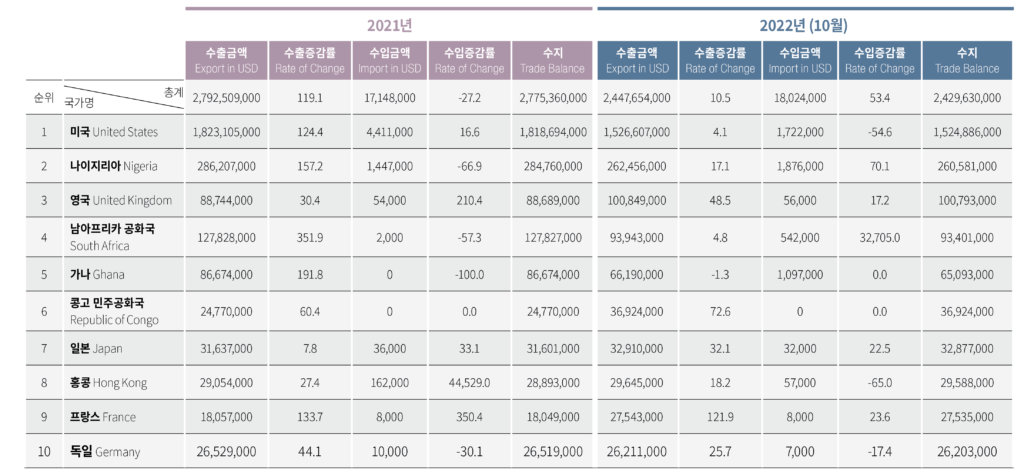Chinese market stays closed, but still strong export to US
Wigs and eyelashes in high volume, the loosened Covid-19 measures likely to open the market
The world’s factory, China, is always at the center of attention for everyone in the U.S. beauty industry. A large bulk of beauty products is traded between the two countries. In 2021, the U.S. was the biggest trading partner of China despite the trade war, and it did not change in 2022.
According to the quarterly report in October 2022, based on data collected up to the year’s third quarter, China exported approximately $495,387,959,000 worth of goods to the U.S. while importing approximately $145,265,138,000. If you take a close look at a few categories (HS670420, HS670300, HS670490) relevant to beauty supplies, you see the trading between the two countries stayed in high volume.

Import/Export statistics for HS 670420 (Wigs, False beard, Eyebrow and Eyelashes, switches and the like of Human Hair)
Most imported and exported goods came from Henan and Shandong provinces, followed by Anhui, Hunan, and Guangdong provinces.

Import/export statistics for HS670300 (Human hair, Dressed, Animal hair & Synthetic material for wigs)
If you divide the category into import and export, China exported the most to Bangladesh, Brazil, Indonesia, the United States, and South Korea, followed by Hong Kong, North Korea, Germany, Myanmar, and India. Imports were mostly from Myanmar, India, Bangladesh, Indonesia, and South Korea. Those are probably related to human hair production in India, Myanmar and synthetic hair production in Bangladesh. Notably, Chinese had negative balance in trade with Myanmar and India.
HS670490 (Wigs, False beards, Eyebrows and Eyelashes, switches and the like, of Animal hair or Textile materials) showed most trade with South Africa, Nigeria, the United States, Hong Kong, and Ghana. In 2021, Nigeria topped the list followed by the U.S., but South Africa surpassed both countries and recorded the most import and export in this category.
China has strictly implemented the zero-Covid policy ever since the onset of the pandemic. This worried many global economists and resulted in gloomy forecast for Chinese market, and the last year’s operational mishaps for Shanghai port, the largest port system in China, have raised concerns for looming crisis. However, according to the trade statistics, China has maintained about the same level of trade as previous year’s.

In May 2022, the first China Beauty Virtual Expo was held online. ©chinabeautyexpo
China stayed closed with its strict Zero-Covid policy, but still foreign buyers could participate in variety of online events in China and communicate with Chinese companies through various platforms. Many companies in China also actively engaged in communication channels for international buyers who could not visit their factories. Another reason is that the global market is still heavily relied on China, the global manufacturing powerhouse. Chinese government made it clear in its 20th Communist Party Congress that China would open its door wider for other countries. The stance is to focus on the global market and draw more international investment.
Upon the commencement of 2022 World Cup, Chinese people were upset over people in other countries enjoying normal daily activities, and protests followed. To calm the protesters, China announced that it would ease the policy in early December. The new policy stated that major cities such as Beijing, Tianjin, Guangzhou, and Shenzhen will no longer require Covid-19 negative test results for use of public transportation and facilities.
Foxcon factory in Zhengzhou has endangered the iPhone supply in the U.S. due to production delay, but it is projected to return to normal operation, and the quarantine and isolation rules in China will likely get loosened for everyone including foreigners. Positive outlook for Chinese economy is looming. There are cautious predictions that China will completely open the door by the second quarter of 2023. It is necessary to closely watch the Chinese market and prepare plans for any change.